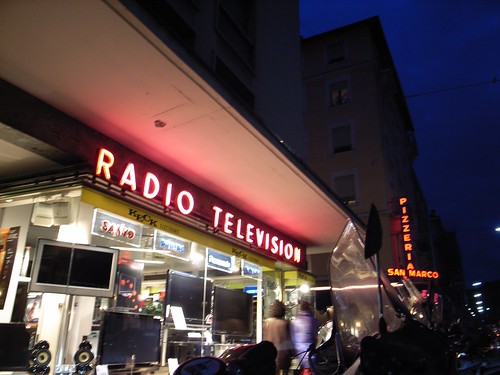 Reading the last issue of "Design and Culture that Basile pointed to me few weeks ago, I ran across this paper yesterday that deals with "homemaking". Working on a small projects about networked objects in the home context, it's quite relevant:
Reading the last issue of "Design and Culture that Basile pointed to me few weeks ago, I ran across this paper yesterday that deals with "homemaking". Working on a small projects about networked objects in the home context, it's quite relevant:
Crewe, L. (2009). The Screen and the Drum: on Form, Function, Fit and Failure in Contemporary Home Consumption, Design and Culture, November Volume 1(3) pp. 307-328.
The aim of the paper is the following:
"this paper explores consumers’ connections to their domestic objects. Focusing on two particular objects (televisions and vacuum cleaners), the paper reflects upon why consumers desire particular domestic objects and how they assemble, arrange and use things in the home. It reveals how functionality is intimately infused with form, how design informs the consumption of everyday domestic objects and how both function and form can fail, deceive and trick."
I found it interesting as it describes the complex relationships people have with their domestic appliances. Based on studying two specific artifacts (televisions and vacuum cleaners), the researchers explores 3 dimensions of this relationship: "the role of product branding, representation and design; the significance of consumer agency and desire; and the influence of commodity form and function in shaping home consumption".
Here's a summary of their conclusion:
"commodity meanings are mobile and diffuse; they are configured, inscribed and appropriated by consumers through placement and use and not just at the point of production. (...) commodities require emotional, sensory or performative investments by consumers in order that their value be realized. Brand value needs to be retrieved, or excavated through consumer practice – quite literally brought alive by consumers. (...) this is important as it suggests that the material qualities of objects may take on a far greater significance than those who produced them could possibly have envisaged. (...) what emerged from the research was how some of the most ubiquitous and ordinary domestic objects were those with the most interesting stories to tell. The important point here is that the normative assumptions one might hold about the aesthetic and technical conventions imputed to everyday objects are largely just that – scripts, projections, imaginings and conventions that are rarely, if ever, evident in practice."
The paper is full of interesting examples such as:
"Another focus group participant – Laura, the vacuum owner who had just left her husband – revealed her intentional destruction of an unwanted vacuum cleaner in order that she could purchase a Dyson. Such sabotage is clearly willful and goes beyond the mere incompetence of users who fail to read operating and maintenance manuals. Laura cut the cord of her old Electrolux, thereby disabling it. (...) One participant discusses how he uses an old conventional vacuum cleaner in the student house he rents out as a mechanism to ensure that his tenants vacuum the house once a week. Here we see how the traditional bagged vacuum cleaner serves a particular purpose that would be impossible with a Dyson. As their landlord, Henry prohibits the students from emptying the vacuum cleaner bag: he visits the house once a week and changes the bag (...) The vacuum bag thus becomes an instrument of surveillance at-a-distance, a tool for the external management of approved cleaning practices and a weapon of financial punishment where necessary."
Why do I blog this? Both the theoretical aspects and the concrete examples drawn from the field are important. In the context of the consulting project I am working on, it enables to broaden the scope of the very notion of networked objects.